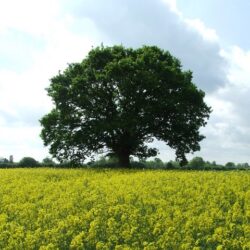הַכָּרָת רִבּוֹנוּת הָאָרֶץ | Indigenous Land Acknowledgement for Toronto, by Aurora Mendelsohn (2020)
Source Link: https://opensiddur.org/?p=30866
open_content_license: Creative Commons Attribution (CC BY) 4.0 International free-culture license date_src_start: 2020-03-30 date_src_end: 2020-03-30 languages_meta: [{"name":"English","code":"eng","standard":"ISO 639-3"},{"name":"Hebrew","code":"heb","standard":"ISO 639-3"}] scripts_meta: [{"name":"Latin","code":"Latn","standard":"ISO 15924"},{"name":"Hebrew (Ktav Ashuri)","code":"Hebr","standard":"ISO 15924"}] Date: 2020-03-30
Last Updated: 2025-05-26
Categories: Seder intro, 🇨🇦 Canada
Tags: 21st century C.E., 58th century A.M., haggadah supplements, indigenous land acknowledgement, Indigenous Peoples, Openers, petiḥah, post-colonial, פרשת חיי שרה parashat Ḥayyei Sarah
Excerpt: An acknowledgement that the land we are conducting our religious ceremonies on is the sacred and traditional land of Indigenous people. It involves a kavvanah and study verses as well as the land acknowledgement. . . .
Content:
| Hebrew |
English |
|
כוונה
|
INTENTION
|
|
הִנְנִי מוּכָן וּמְזוּמָּן \ מוּכָנָה וּמְזַמֶּנֶת
לְקַיֵּם מִצְוַת הַכָּרָת רִבּוֹנוּת הָאָרֶץ
לְשֵׁם יִחוּד.
|
Here we are, ready and prepared
to acknowledge the sovereignty of the land as we are commanded
for the sake of unification.
|
|
כָּכַּתוּב:
וּנְטַעְתִּים עַל־אַדְמָתָם
וְלֹא יִנָּתְשׁוּ עוֹד מֵעַל אַדְמָתָם
אֲשֶׁר נָתַתִּי לָהֶם
אָמַר יְהוָה אֱלֹהֶיךָ׃ (עמוס ט:טו).
|
As it is written:
God said
I will plant them on their land
and they will no longer be removed from their land
which I gave them.
(Amos 9:15).
|
|
וְהָאָרֶץ לֹא תִמָּכֵר לִצְמִתֻת
כִּי־לִי הָאָרֶץ
כִּי־גֵרִים וְתוֹשָׁבִים אַתֶּם
עִמָּדִי׃ (ויקרא כה:כג).
|
The land shall not be sold permanently
because the land is Mine,
since you are all immigrants and resident-settlers
according to Me (Leviticus 25:23).
|
|
הַכָּרָת רִבּוֹנוּת הָאָרֶץ
|
LAND ACKNOWLEDGMENT
|
|
|
This land
is the traditional territory
and sacred land
of many nations
including:
the Mississaugas of the Credit,
the Anishnabeg,
the Chippewa,
the Haudenosaunee
and the Wendat peoples.
It is now home to many diverse First Nations, Inuit, and Métis peoples.
|
|
|
We acknowledge that Toronto is covered
by Treaty 13 with the Mississaugas of the Credit
and the Williams Treaties signed with multiple Mississaugas and Chippewa bands.
This territory was the subject of the Dish With One Spoon Wampum Belt Covenant,
an agreement between the Anishinaabe, Mississaugas, and Haudenosaunee
to peaceably share and care for the resources around the Great Lakes.
|
|
|
Though we as Jews have also suffered
from land displacement
and cultural displacement,
we acknowledge
the ways in which we,
as non-indigenous people in this land,
have benefited from colonialism,
former and ongoing,
which has hurt and oppressed First Nations peoples.
We ask for their forgiveness.
|
This indigenous land acknowledgement was compiled by Dr. Aurora Mendelsohn for her Mendelsohn/Kalikow Family Haggadah (2020) and was adapted from a Land Acknowledgment offered at the Kohenet service held at the Parliament of World Religions, Toronto, November 2018. It reads, “Jews of many backgrounds have experienced a sense of geographical and cultural displacement over the years. We acknowledge our history of displacement, and as importantly, we acknowledge the ways in which we as non-indigenous peoples and settlers have benefited from colonialism, former and ongoing which has hurt and oppressed First Nations peoples. We ask for your forgiveness at this time.” Territories and treaties obtained from the interactive map at https://native-land.ca, which covers Indigenous lands globally. For adapting this acknowledgement to your context, specify your location.
Source(s)
Click to access Land-Acknowledgement-Aurora-Mendelsohn-2020.pdf
Contributor: Aurora Mendelsohn
Co-authors:
Featured Image:

Title: The_belt_of_wampum_delivered_by_the_Indians_to_William_Penn_at_the__Great_Treaty__(1682)
Caption: The belt of wampum delivered by the Indians to William Penn at the "Great Treaty" under the Elm Tree at Shackamoxon in 1682.

